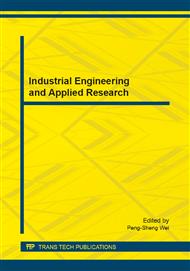p.3
p.7
p.14
p.18
p.24
p.28
p.33
p.39
Thermo-Structural Coupling Numerical Analysis of Rectangular Vessel
Abstract:
A rectangular vessel has two contact surfaces with different materials, iron and copper. In order to investigate thermo-structural characteristics of the vessel, the structural model is developed. The structural analysis is coupled with the thermal condition. The numerical simulation model with hex eight-node thermally coupled brick elements is established and solved by finite element method. The results show that the maximum stress with 112.5 MPa is distributed on the contact surface between the different materials. Because of the different materials’ expansions, there is stress concentration on the contact surface. The maximum displacement is 0.27 mm, almost the same at different pressure loads. The maximum stress increased to about 300 MPa as the temperature increase. The structural response caused by thermal expansion is important for the vessel design.
Info:
Periodical:
Pages:
14-17
Citation:
Online since:
August 2014
Authors:
Price:
Сopyright:
© 2014 Trans Tech Publications Ltd. All Rights Reserved
Share:
Citation:


